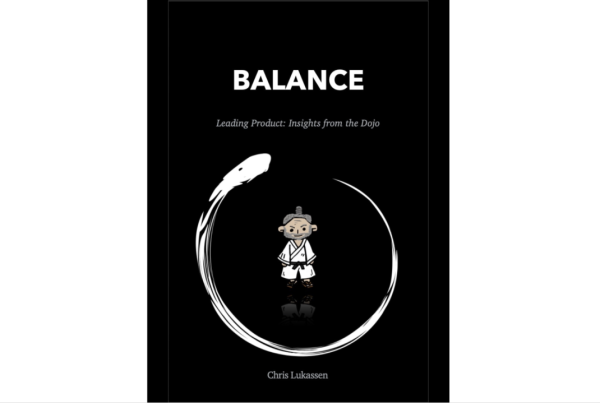I’ve been suffering from migraines for over 30 years. I’m much better now but at one point in my life, in my mid-thirties, I reached a peak of 19 days per month. I’m now down to a couple of episodes per month, each lasting 2 or 3 days on average, and consider myself blessed for this good fortune.
As I write these lines, I am going on day 3 of my most recent episode. I’m at a work-related conference in California where I will have some significant hosting responsibilities for the next 7 days but thankfully, my official duties are over for the day. It’s still clear outside but I’m sitting in the dark in my room, shades closed against the sunlight. I just slept for two hours but it would probably be more accurate to say that I passed out on my bed a few hours ago, came to about an hour ago and could no longer sleep (more on this later).
For the benefit of people who are not familiar with them, I must clarify right off the bat that migraines are not just “headaches”. They do entail pain in the head, but that is only the beginning of it. For me, it generally starts with some pain in my neck a couple of days before the actual migraine hits me. In the following 24 hours, I usually start experiencing gastric problems, while my joints begin swelling. All my joints: knuckles, knees, feet, spine – my entire body seems to become painful. Sometimes, I dodge the bullet and it just stops there. Other times, the initial symptoms lead to a full-fledged migraine. Compared to ten years ago, I get away clean more often than I used to but it’s very unpredictable.
A full-fledged migraine, for me, comes with a searing pain behind my right eye – always the right eye – as well as nausea, disorientation and loss of balance. There are other symptoms, such as a hyperactive bladder which never fails to elicit irritating quips from my family and which explains why I won’t fly if I can’t book an aisle seat (few fellow passengers enjoy having to get up every twenty minutes to let someone through). And then there’s the symptom that doctors refer to as “transient aphasia” – what happens when I start having trouble stringing words into coherent sentences – especially in English (somehow, my native French isn’t as badly affected).
But worst of all, I think, is the sheer exhaustion that migraines bring about. Think of it as sleeping for 8 hours and waking up as if you hadn’t slept for two days, and having to drag yourself out of bed feeling so tired that you want to cry. But it may also happen that a migraine will just plain prevent you from sleeping however tired you are, which medical science refers to as “migraine-induced insomnia”. Other times, the migraine will taunt you by allowing you to fall asleep immediately, just to wake you up an hour later for the rest of the night.
Some will probably see this as a case of Stockholm syndrome – an emotional attachment to the condition that has been keeping me hostage for three decades – but I’ve come to believe over the years that I may have benefited in some ways from my migraines – at least that’s what I like to tell myself.
First, migraines tend to make me ferociously focused on whatever I’ve set out to accomplish or achieve at that moment in time – like sitting at my computer for 6 hours straight to write this post. I’m known as being extremely tenacious and it would be quite ironic if I owed what I see as one of my greatest strengths to a lifetime of migraines.
Second, migraines tend to make my mind race wildly, as was the case when I decided to get up and start writing this post. I might well have trouble, in that moment, to articulate clear sentences but the ideas going through my mind are numerous and amazingly clear. I’ve had some of my best ideas and insights over the years while sitting with an unfocused gaze – at home or at the office – suffering from a migraine. For all that, I would not wish them on my worst enemy (if I had one – which I don’t).
Speaking of the office, I don’t believe I’ve missed more than a total of 5 to 10 days over the past twenty years due to migraines. Rightly or wrongly, I have always chosen to get myself out of bed and go to work. This could well be the result of some misguided heroism – of being brought up at a time when it was assumed that you should drag yourself to work at all cost, even if it meant contaminating the entire department with your bad cold or flu. Of course, my life would have turned out very differently if I hadn’t but we’re all different and I do sympathise with people who choose or are forced by their condition to do otherwise.
In any event, I would wager that most people who have interacted with me at work while I was suffering from repeated migraines never had a clue about what was going on. Like many others, I prefer to go about my business hiding my condition and have been able to do that pretty effectively over the years, even if it takes a toll on me every single time. Often, I even try to hide from my own family that I’m suffering from a migraine. They know that I don’t like having my nose rubbed in it so they usually don’t bring it up, but I would wager that they’re generally on to me – especially my wife.
Despite the fact that most people prefer not to talk about their migraines, I’ve become aware over the years of many colleagues who are similarly affected. It is, in fact, an extremely common condition as well as a major cause of disability and it’s estimated that it affects 1 billion people worldwide. Interestingly, there are three female migraine sufferers for every male who, like me, is affected by them so it’s not surprising perhaps that I’ve had the opportunity to discuss the issue with many female colleagues over the years. What is more surprising is that I can’t recall a male colleague ever bringing up that he suffers from migraines. I’m sure they’re out there and perhaps this post will ferret them out and allow more of them to join the ongoing conversation about this debilitating condition.



